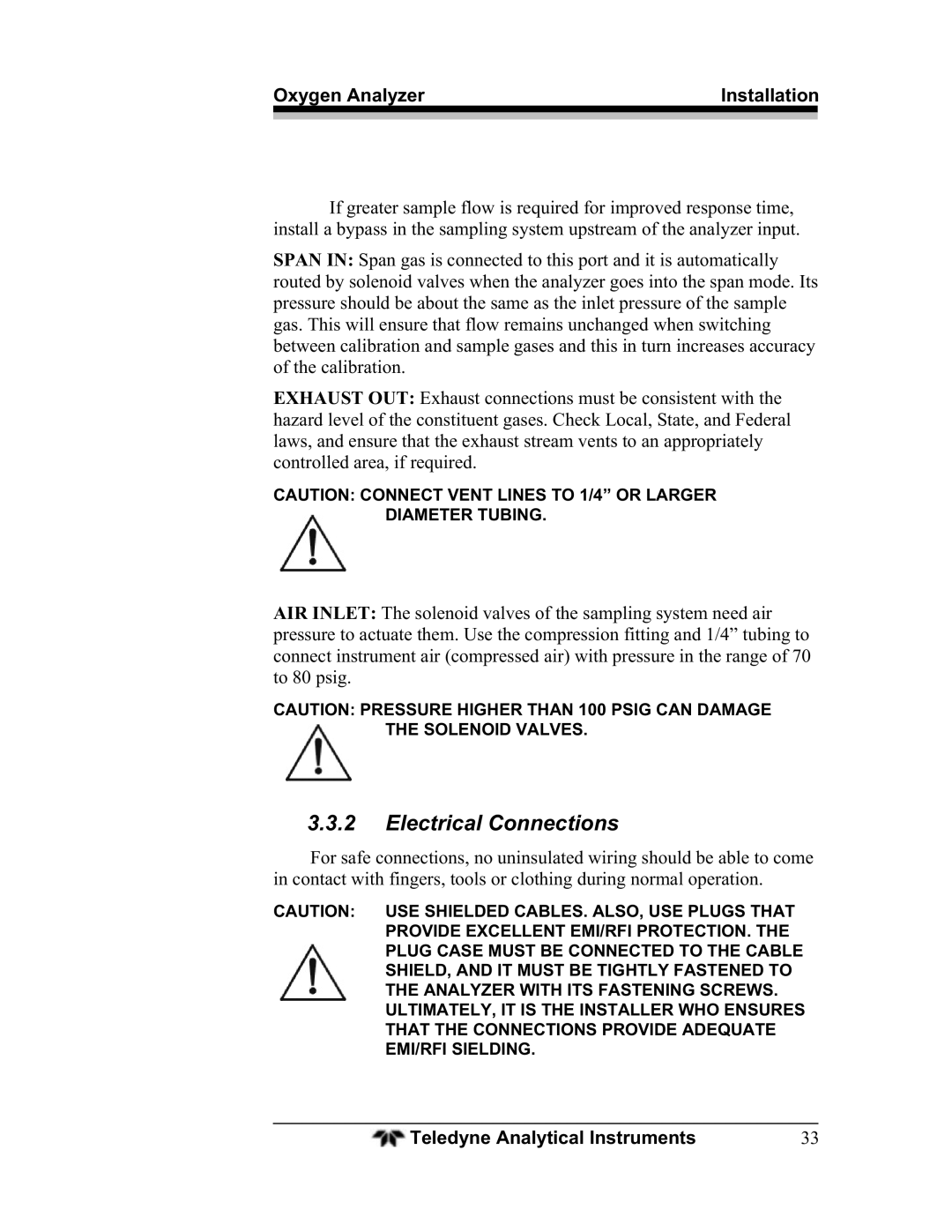
Oxygen Analyzer | Installation | |
|
|
|
If greater sample flow is required for improved response time, install a bypass in the sampling system upstream of the analyzer input.
SPAN IN: Span gas is connected to this port and it is automatically routed by solenoid valves when the analyzer goes into the span mode. Its pressure should be about the same as the inlet pressure of the sample gas. This will ensure that flow remains unchanged when switching between calibration and sample gases and this in turn increases accuracy of the calibration.
EXHAUST OUT: Exhaust connections must be consistent with the hazard level of the constituent gases. Check Local, State, and Federal laws, and ensure that the exhaust stream vents to an appropriately controlled area, if required.
CAUTION: CONNECT VENT LINES TO 1/4” OR LARGER DIAMETER TUBING.
AIR INLET: The solenoid valves of the sampling system need air pressure to actuate them. Use the compression fitting and 1/4” tubing to connect instrument air (compressed air) with pressure in the range of 70 to 80 psig.
CAUTION: PRESSURE HIGHER THAN 100 PSIG CAN DAMAGE THE SOLENOID VALVES.
3.3.2Electrical Connections
For safe connections, no uninsulated wiring should be able to come in contact with fingers, tools or clothing during normal operation.
CAUTION: USE SHIELDED CABLES. ALSO, USE PLUGS THAT PROVIDE EXCELLENT EMI/RFI PROTECTION. THE PLUG CASE MUST BE CONNECTED TO THE CABLE SHIELD, AND IT MUST BE TIGHTLY FASTENED TO THE ANALYZER WITH ITS FASTENING SCREWS. ULTIMATELY, IT IS THE INSTALLER WHO ENSURES THAT THE CONNECTIONS PROVIDE ADEQUATE EMI/RFI SIELDING.
Teledyne Analytical Instruments | 33 |
